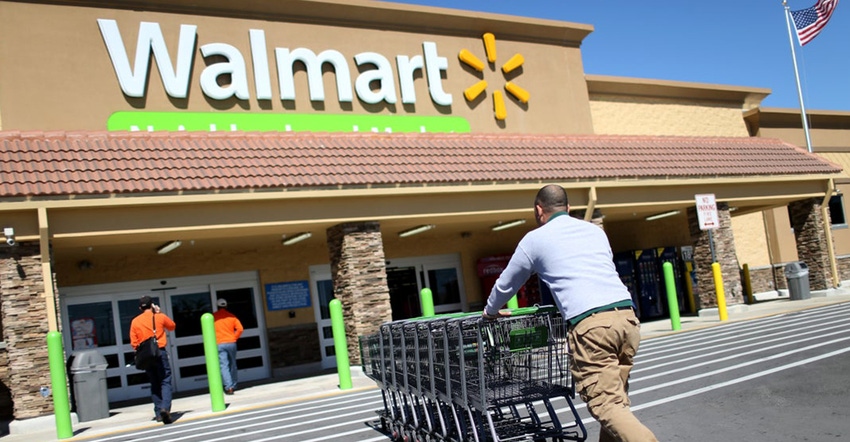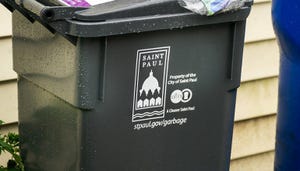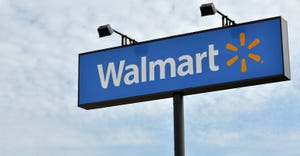Walmart States It Diverted 82% from U.S. Landfills in 2020: ESG Update

Walmart is now cataloging its progress regarding key ESG metrics in a new, "living" digital format on the company's website.
The interactive document includes the Arkansas-based retailer's FY21 ESG summary and data tables in its journey to become more circular.
Kathleen McLaughlin, executive vice president and chief sustainability officer, Walmart Inc., announced the accessibility of the data, saying: "The briefs will be refreshed online periodically, providing our stakeholders with timely information. We have updated our list of priority issues based on recent stakeholder engagement, reflecting stakeholder expectations, relevance to our business, and Walmart’s ability to make a difference in four broad themes of opportunity, sustainability, community and ethics and integrity."
Waste Diversion
The company's strategy for addressing waste diversion is summed up in five key areas:
Operational waste: Achieving zero waste in U.S., Canada and Mexico by 2025 by addressing secondary packaging, unsold food and general merchandise and other items such as automotive waste and signage
Food waste in the value chain: Reducing food waste in our operations globally, while encouraging suppliers and customers to reduce food waste and supporting local food recovery/hunger relief programs
Product packaging waste: Optimizing packaging, reducing reliance on plastic bags and using labeling to help customers to reduce, reuse and recycle
Customer engagement: Providing customers ways to buy gently used products, buy sustainably and recycle more
Local infrastructure for recycling and reuse: Investing in local infrastructure to enable adoption of recycling and reuse solutions
Among the most interesting numbers are its progress related to the key goals for zero waste and plastic reduction. One of Walmart's key metrics entails zero waste to landfill and incineration for its operations in United States, Canada, Mexico, U.K. and Japan markets by 2025.
The company reported that its 2020 U.S. diversion rate was 82%, a figure that remained steady year over year. Global waste diversion increased to 81%, up from 80% in 2019 and up 2% from 2018.
Walmart detailed the methodology behind the metric in its endnotes:
Meeting or exceeding Zero Waste International Alliance (ZWIA) business recognition program requirements, which include adoption of ZWIA definition of zero waste and achievement of 90% or more diversion of all discarded resources from landfills, incinerators and the environment. We measure reductions in food waste through use of the following: Measurement metric = total weight of non-diverted food in pounds (i.e., landfill and controlled combustion without energy recovery) / total weight of all food sold in pounds. Zero waste goal and reporting scope includes waste materials and products generated in Walmart’s owned facilities and its operations (stores, clubs, warehouses, return centers, truck maintenance garages, etc.).
Data showed that 70% of the company's waste was recycled or reused, 5% was donated, 4% went to animal feed, 1% was composted, 1% to aneorbic digestion, 1% incineration and 18% went to landfill. Walmart's landfill percentage has decreased 3% since 2018.
This is the first year Walmart published both global recycled food waste and global food donations numbers. The company noted in previous years that it reported a combined food waste metric.
In 2020, the company stated that more than 950 million pounds of food waste was diverted for composting, animal feed, anaerobic digestion and biochemical processing. Food donations rose to more than 745 million pounds, up from 680 million pounds in 2019, or 9.6% year over year.
The amount of waste collected through customer recycling programs in Argentina, Chile, Mexico, Japan and the United Kingdom fell 30.8% to 18 million in 2020 from 26 million pounds the prior year. In its notes, the company attributed the decrease to a divestment from its retail operations in Argentina, the U.K. and Japan in November 2020, February and March of 2021, respectively.
Packaging Sustainability
Walmart nearly achieved its goal of 100% of PVC-free plastic packaging in its private brand products, In 2020, the company stated that 99% of its general label merchandise packaging was PVC-free, up from 97% the prior year.
The company still has work to do to achieve its goal of using post-consumer recycled content for 20% of its private brand packaging by 2025. In 2020, 9% of private brand products were packaged using recycled content, up from 7% in 2019.
The estimated percentage of global private brand packaging that is recyclable, reusable or industrially compostable rose to 62% in 2020, up from around 55% in 2019.
Total weight of private brand plastic packaging rose to more than 1.3 million metric tons in 2020, up from 1.2 million the previous year. Eighty-one percent of Walmart's global private brand net sales reported packaging data.
"The challenges facing business and society require collective action from us all. The pandemic demonstrated how small but widespread changes in individual behavior can produce large-scale, positive effects," McLaughlin said.
Plastics Recycling Lawsuit
Despite movement in the company's ESG goals, Walmart still faces scrunity regarding its recycling claims. In December 2020, Greenpeace filed suit against the retailer claiming that Walmart employs deceptive labeling practices.
The advocacy group said it had reached out to Walmart in 2019 about its private label packaging, stating many of its products have “unqualified and otherwise problematic recyclable labels,” a violation of Federal Trade Commission (FTC) guidelines.
Walmart employs How2Recycle label methodology on its private brands. About 57% of private labels in U.S. Walmart stores and 67% of private label products in its Sam's Club locations had How2Recycle branding. The company aims to have 100% of its U.S. U.S. food and consumable private brand primary packaging labeled with the How2Recycle® label by 2022
"Consumers cannot 'check locally' on recyclability for #3-7 plastics, as many labels instruct, because those plastics are being sent to landfill or incinerator," Greenpeace stated.
A motion to dismiss the lawsuit was filed in March. A judge is expected to make a ruling on the motion in the near future. If the suit continues, the parties can be expected back in the courtroom as soon as September.
View Walmart's ESG progress on key metrics for a circular economy here.
About the Author(s)
You May Also Like




